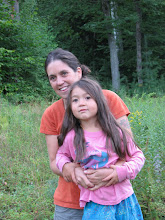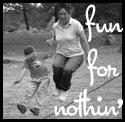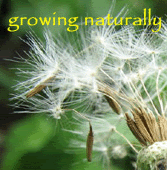Roots, Shoots More........Making Herbal Beers
Here is a link to an article I wrote for
Hilltown Families plus an excerpt from Mrs Grieves!
The excerpts below are from A Modern Herbal, by Mrs. M. Grieve, F.R.H.S., originally published in 1931 by Jonathan Cape in England and Harcourt, Brace & Company in the U.S., the latter as reprinted by Dover Publications since 1971.
RECIPES FOR HERB BEER
Formerly every farmhouse inn had a brewing plant and brewhouse attached to the buildings, and all brewed their own beer till the large breweries were established and supplanted home-brewed beers. Many of these farmhouses then began to brew their own ‘stingo’ from wayside herbs, employing old rustic recipes that had been carried down from generation to generation. The true value of vegetable bitters and of herb beers have yet to be recognized by all sections of the community. Workmen in puddling furnaces and potteries in the Midland and Northern counties find, however, that a tea made of tonic herbs is cheaper and less intoxicating than ordinary beer and patronize the herb beers freely, Dandelion Stout ranking as one of the favourites. It is also made in Canada.
Dandelion is a good ingredient in many digestive or diet drinks. A dinner drink may be made as follows: Take 2 oz. each of dried Dandelion and Nettle herbs and 1 oz. of Yellow Dock. Boil in 1 gallon of water for 15 minutes and then strain the liquor while hot on to 2 lb. of sugar, on the top of which is sprinkled 2 tablespoonsful of powdered Ginger. Leave till milk-warm, then add boiled water gone cold to bring the quantity up to 2 gallons. The temperature must then not be above 75° F. Now dissolve 1/2 oz. solid yeast in a little of the liquid and stir into the bulk. Allow to ferment 24 hours, skim and bottle, and it will be ready for use in a day or two.
A good, pleasant-tasting botanic beer is also made of the Nettle alone. Quantities of the young fresh tops are boiled in a gallon of water, with the juice of two lemons, a teaspoonful of crushed ginger and 1 lb. of brown sugar. Fresh yeast is floated on toast in the liquor, when cold, to ferment it, and when it is bottled the result is a specially wholesome sort of ginger beer.
Meadow Sweet was also formerly much in favour. The mash when worked with barm made a pleasant drink, either in the harvest field or at the table. It required little sugar, some even made it without any sugar at all.
Another favourite brew was that of armsful of Meadowsweet, Yarrow, Dandelion and Nettles, and the mash when ‘sweetened with old honey’ and well worked with barm, and then bottled in big stoneware bottles, made a drink strong enough to turn even an old toper's head.
Old honeycomb from the thatch of an ancient cottage, filled with rich and nearly black honey, when boiled into syrup and then strained, was used in the making of herb beer, while the wax was put at the mouths of the hives for the bees.
Dandelion, Meadowsweet and Agrimony, equal quantities of each, would also be boiled together for 20 minutes (about 2 oz. each of the dried herbs to 2 gallons of water), then strained and 2 lb. of sugar and 1/2 pint of barm or yeast added. This was bottled after standing in a warm place for 12 hours. This recipe is still in use.
A Herb Beer that needs no yeast is made from equal quantities of Meadowsweet, Betony, Agrimony and Raspberry leaves (2 oz. of each) boiled in 2 gallons of water for 15 minutes, strained, then 2 lb. of white sugar added and bottled when nearly cool.
In some outlying islands of the Hebrides there is still brewed a drinkable beer by making two-thirds Heath tops with one-third of malt.
HOP BITTERS, as an appetiser, to be taken in tablespoonful doses three times in the day before eating, may be made as follows: Take 2 oz. of Buchu leaves and 1/2 lb. of Hops. Boil these in 5 quarts of water in an iron vessel for an hour. When lukewarm add essence of Winter green (Pyrola) 2 oz. and 1 pint alcohol.
Another way of making Hop Bitters is to take 1/2 oz. Hops, 1 oz. Angelica Herb and 1 oz. Holy Thistle. Pour 3 pints of boiling water on them and strain when cold. A wineglassful may be taken four times a day.
To make a good HOP BEER, Put 2 oz. Hops in 2 quarts of water for 15 minutes. Then strain and dissolve 1 lb. of sugar in the liquor. To this add 4 quarts of cold water and 2 tablespoonsful of fresh barm. Allow to stand for 12 hours in a warm place and it will then be ready for bottling.
[from NETTLES, Urtica spp.]
Nettle Beer
The Nettle Beer made by cottagers is often given to their old folk as a remedy for gouty and rheumatic pains, but apart from this purpose it forms a pleasant drink. It may be made as follows: Take 2 gallons of cold water and a good pailful of washed young Nettle tops, add 3 or 4 large handsful of Dandelion, the same of Clivers (Goosegrass) and 2 oz. Of bruised, whole ginger. Boil gently for 40 minutes, then strain and stir in 2 teacupsful of brown sugar. When lukewarm place on the top a slice of toasted bread, spread with 1 oz. of compressed yeast, stirred till liquid with a teaspoonful of sugar. Keep it fairly warm for 6 or 7 hours, then remove the scum and stir in a tablespoonful of cream of tartar. Bottle and tie the corks securely. The result is a specially wholesome sort of ginger beer. The juice Of 2 lemons may be substituted for the Dandelion and Clivers. Other herbs are often added to Nettles in the making of Herb Beer, such as Burdock, Meadowsweet, Avens Horehound, the combination making a refreshing summer drink.
[from MUGWORT, Artemisia vulgaris]
The Mugwort is said to have derived its name from having been used to flavour drinks. It was, in common with other herbs, such as Ground Ivy, used to a great extent for flavouring beer before the introduction of hops. For this purpose, the plant was gathered when in flower and dried, the fresh herb being considered unsuitable for this object: malt liquor was then boiled with it so as to form a strong decoction, and the liquid thus prepared was added to the beer. Until recent years, it was still used in some parts of the country to flavour the table beer brewed by cottagers.
[from DANDELION, Taraxacum officinale]
The dried Dandelion leaves are also employed as an ingredient in many digestive or diet drinks and herb beers. Dandelion Beer is a rustic fermented drink common in many parts of the country and made also in Canada. Workmen in the furnaces and potteries of the industrial towns of the Midlands have frequent resource to many of the tonic Herb Beers, finding them cheaper and less intoxicating than ordinary beer, and Dandelion stout ranks as a favourite. An agreeable and wholesome fermented drink is made from Dandelions, Nettles and Yellow Dock.
In Berkshire and Worcestershire, the flowers are used in the preparation of a beverage known as Dandelion Wine. This is made by pouring a gallon of boiling water over a gallon of the flowers. After being well stirred, it is covered with a blanket and allowed to stand for three days, being stirred again at intervals, after which it is strained and the liquor boiled for 30 minutes, with the addition of 3 1/2 lb. of loaf sugar, a little ginger sliced, the rind of 1 orange and 1 lemon sliced. When cold, a little yeast is placed in it on a piece of toast, producing fermentation. It is then covered over and allowed to stand two days until it has ceased ‘working,’ when it is placed in a cask, well bunged down for two months before bottling. This wine is suggestive of sherry slightly flat, and has the deserved reputation of being an excellent tonic, extremely good for the blood.
The roasted roots are largely used to form Dandelion Coffee, being first thoroughly cleaned, then dried by artificial heat, and slightly roasted till they are the tint of coffee, when they are ground ready for use. The roots are taken up in the autumn, being then most fitted for this purpose. The prepared powder is said to be almost indistinguishable from real coffee, and is claimed to be an improvement to inferior coffee, which is often an adulterated product. Of late years, Dandelion Coffee has come more into use in this country, being obtainable at most vegetarian restaurants and stores. Formerly it used occasionally to be given for medicinal purposes, generally mixed with true coffee to give it a better flavour. The ground root was sometimes mixed with chocolate for a similar purpose. Dandelion Coffee is a natural beverage without any of the injurious effects that ordinary tea and coffee have on the nerves and digestive organs. It exercises a stimulating influence over the whole system, helping the liver and kidneys to do their work and keeping the bowels in a healthy condition, so that it offers great advantages to dyspeptics arid does not cause wakefulness.
[from YARROW, Achillea millefolium]
In Sweden it is called ‘Field Hop’ and has been used in the manufacture of ber. Linnæus considered beer thus brewed more intoxicating than when hops were used.
It is said to have a similar use in Africa.
[from SAXIFRAGE, BURNET, Pimpinella saxifraga (salad burnet)]
It is also prescribed in asthma and dropsy.
Small bunches of the leaves and shoots, tied together and suspended in a cask of beer impart to it an agreeable aromatic flavour, and are thought to correct tart or spoiled wines.
[from BURNET, GREATER, Sanguisorba officinalis]
. . . the herb is also largely used in Herb Beer.
[from MARJORAM, WILD, Origanum vulgare]
The tops are also sometimes put into table beer, to give it an aromatic flavour and preserve it, and before the introduction of hops they were nearly as much in demand for ale-brewing as the ground ivy or wood sage.
[from MEADOWSWEET, Spiræa ulmaria]
It is one of the fifty ingredients in a drink called ‘Save,’ mentioned in Chaucer's Knight’s Tale, in the fourteenth century being called Medwort, or Meadwort, i.e. the mead or honey-wine herb, and the flowers were often put into wine and beer. It is still incorporated in many herb beers.








































